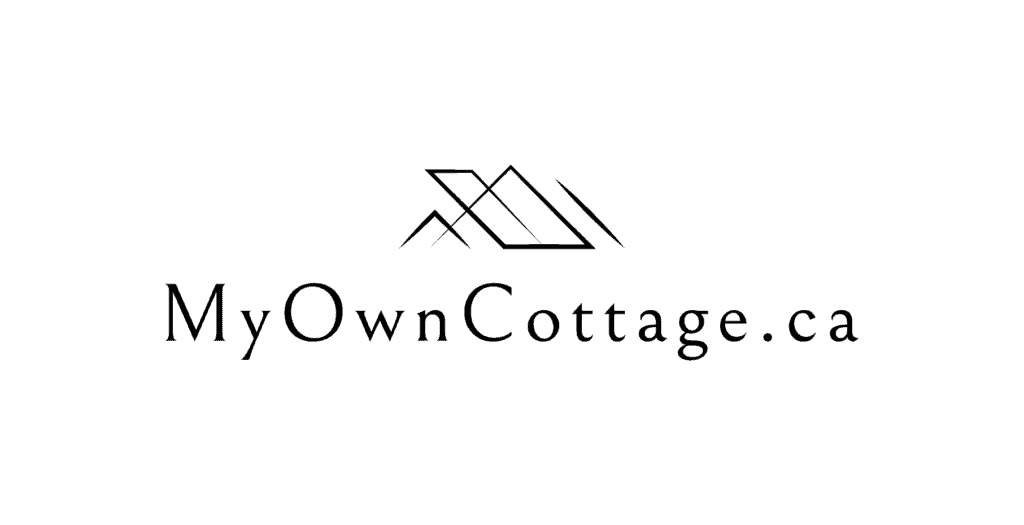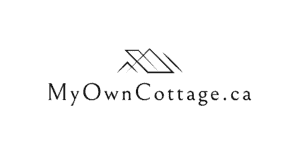Are Prefab Cottages in Ontario Safe from Wildfires and Flooding?
Are prefab cottages in Ontario safe from wildfires and flooding?
Discover how to make informed, resilient housing choices.
Are Prefab Cottages in Ontario Safe from Wildfires and Flooding?
Short Answer: Yes — when designed to CSA A277 standards and carefully sited, modern prefab cottages in Ontario can be exceptionally resilient against wildfires and flooding.
Built using advanced building techniques in a controlled environment, today’s modular homes represent a high-quality, sustainable housing solution ideal for Ontario’s climate.
With thoughtful home design, resilient materials, and the support of expert construction personnel, prefab cottages deliver both safety and peace of mind.
Why Prefab Safety Matters More Than Ever
Living in a modern prefab cottage offers a great deal of advantages and lifestyle benefits.
However, Ontario’s cottage properties — from the Kawarthas to Lake Muskoka — are increasingly impacted by natural disasters.
In 2023 alone, more than 700 wildfires scorched over 441,000 hectares of forest, while heavy spring rains flooded communities like Peterborough and Bracebridge.
Prefab homes, including tiny homes and accessory structures, have evolved into fully custom, energy-efficient real estate solutions.
Whether you’re building a vacation home, guest house, or year-round residence, they offer a very efficient way to construct a durable new home.
🔥 Understanding Ontario's Climate Hazards
Wildfire Risk
Ontario’s FireSmart interactive map shows areas with elevated fire danger, based on real-time data from 130+ stations.
Wildfires are now more frequent due to rising temperatures, dry forest conditions, and seasonal rain delays.
Flooding Risk
Spring thaws and increasingly intense storms increase the frequency of floodplain overflow.
Flood hazard zones are mapped by Ontario’s Ministry of Natural Resources and Forestry (MNRF).
✅ Tip: Use these maps when evaluating building plans for your custom design to ensure your prefab cottage is positioned for safety and long-term comfort.
🏗️ How Modern Prefab Cottages Are Built for Resilience
Prefab cottages today reflect modern design and sustainable materials that meet or exceed current industry standards.
🔒 Fire-Resistant Construction Features
Non-combustible cladding: Fibre cement siding and steel roofs minimize ignition risk.
Defensible space and natural landscape design: Builders create cleared zones to prevent fire spread.
CSA A277-certified structures: Fully compliant with Ontario Building Code and Green Building protocols.
“We use steel roofing and fire-rated siding on every home model near forest zones,” says Jamie L., Site Manager with 15+ years in modular construction.
🌊 Flood Mitigation Techniques
Elevated modular platforms and pier foundations: Help prefab cottages stay safe near water access lots.
Waterproof membranes & interior finishes: Stop moisture and mold damage in kitchens, full bathrooms, and living rooms.
Engineered grading and drainage: Protects entry doors and sq ft living space.
🔍 Prefab construction minimizes the risk of construction delays, especially rain delays, by relying on factory construction with tight quality control.
🛡️ Insurance Coverage for Prefab Homes in Risk Zones
Insurance providers focus on resilience and compliance, not building methods.
Prefabricated cottages often exceed structural expectations due to transport reinforcement.
Fire mitigation upgrades: Add metal roofs, spark arrestors, or smart smoke suppression.
Flood-safe designs: Raised square foot designs, concrete piers, and smart HVAC systems reduce exposure.
📈 Danielle K., Insurance Advisor: “Prefab homes with disaster prevention features often qualify for discounts — especially if homeowners invest in smart upgrades like water shutoff sensors or exterior grading.”
🧑🔧 Real Stories: When Resilient Design Pays Off
Muskoka Room Fire Survival (2022)
A family near Lake View Port Carling preserved their Muskoka Room thanks to steel roofing, cleared defensible space, and fire-rated decking.
Flood Protection in Bancroft
A retired couple’s modern prefab tiny house stayed dry thanks to elevated piers and smart waterproof insulation.
Lake Muskoka Flood, 2019
“Our prefab home avoided major damage due to our elevation strategy. The insurance payout was fast, and premiums didn’t increase,” said Emily and Jonah.
🔍 FAQs for Ontario Home Buyers
Q: Can I insure a modular home in a high-risk zone?
A: Yes. As long as your prefab cottage meets CSA and local building standards, insurance is accessible.
Q: Is disaster relief available for prefab homes?
A: Yes. Government programs like CMHC provide coverage for prefab and site-built homes alike.
Q: Are prefab homes weaker than traditional cottages?
A: No. In fact, many modular homes exceed stick-built cottages in structural integrity and energy efficiency.
🛠️ Preparing Your Dream Home for Resilience
Before You Build:
Evaluate your site’s slope, soil, and exposure using MNRF maps.
Choose a high quality product built to withstand climate extremes.
After You Move In:
Maintain your natural landscape with defensible space.
Install smart home systems: air quality monitors, leak detectors, and efficient HVAC systems.
Upgrade your custom home with solar panels or low-energy lighting to reduce energy consumption.
📣 Expert Opinions from Industry Leaders
Paul G., Structural Engineer: “Prefab homes must pass transportation stress thresholds. That makes them more rigid and often stronger than traditional builds.”
Ontario Building Officials Association (OBOA): Confirms that CSA A277-certified homes are fully compliant with Ontario Cottage regulations and real estate laws.
🏡 The Verdict: Safe, Efficient & Future-Ready
Living in a modern prefab cottage in Ontario offers:
✅ Fire & flood resilience
✅ Smart home integration
✅ Custom floor plans
✅ Sustainable building materials
✅ Quick delivery with fewer construction delays
Whether you’re planning a lakeside tiny home, a small sleeping cabin, or a guest house for your existing cottage, modular construction provides endless possibilities with a small footprint and high efficiency.
Are Prefab Cottages a Safe Bet for Ontario's Future?
Prefab cottages aren’t just stylish—they’re smart.
With modern construction techniques, high quality products, and climate-adaptive home design, they offer not just shelter—but peace of mind.
From lakeside serenity to sustainable living, prefab offers a very efficient way to build your vacation home, guest house, or new home.
And when wildfires blaze or rivers rise, the right design can mean the difference between recovery and ruin.
✅ Ready to Build Safer?
Living in a modern prefab cottage in Ontario should make you feel safe.
Take the next step with expert guidance you can trust.
Book a free consultation or call us directly at My Own Cottage to get started on your disaster-proof prefab cottage in Ontario.
Built for safety. Designed for your lifestyle. Backed by professionals.
🧑💼 Request a Free Consultation
📲 Call Us Directly: (705) 345-9337
✅ Ontario-Built | ⚡ Energy-Efficient | 🏡 Fully Customizable | 🚚 Fast Delivery
Alternatively, for your convenience, you can also simply fill out the contact form below and we’ll get back to you soon! 👇
❓ FAQ: Are Prefab Cottages in Ontario Safe from Wildfires and Flooding?
Are prefab cottages in Ontario safe from wildfires and flooding?
Yes, prefab cottages in Ontario can be safe when built with fire-resistant materials, elevated foundations, and in compliance with the Ontario Building Code (OBC) and CSA A277 standards.
Are prefab homes legal in Ontario?
Yes, prefab homes are legal in Ontario and must meet the OBC requirements and obtain CSA A277 certification for permanent residences.
What is the minimum square footage for a house in Ontario?
Ontario has no province-wide minimum square footage, but most municipalities require dwellings to be at least 400 to 700 sq ft, depending on zoning bylaws.
What is the Ontario New Home Warranties Plan Act?
The Ontario New Home Warranties Plan Act regulates Tarion, which provides warranty protection on new homes for up to seven years, including structural defects and delayed closings.
How can I find licensed home builders in Ontario?
Use the Tarion New Home Builder Directory to find licensed, registered builders with warranty coverage and verified performance history.
How do I check if a contractor is licensed and insured in Ontario?
Search the contractor’s name in the Tarion Builder Directory and request proof of liability insurance and WSIB (Workplace Safety Insurance Board) coverage.
What are Tarion homeowner responsibilities?
Homeowners must maintain the property, report issues within Tarion deadlines, and follow seasonal maintenance guidelines to keep warranties valid.
What is the Homeowner Information Package?
The Homeowner Information Package (HIP) explains Tarion warranty coverage, timelines, and homeowner obligations and must be provided by the builder before or at contract signing.
What is the New Home Warranty Builder Registry?
It’s an online Tarion tool to verify a builder’s registration, view their warranty history, and confirm their license and reputation before purchase.
What is the Tarion security deposit?
The Tarion security deposit is paid by builders (not homeowners) and acts as financial assurance to cover warranty obligations if the builder defaults.
What does Tarion require for homeowner maintenance?
Homeowners must regularly clean eavestroughs, maintain grading, seal windows and doors, and manage ventilation to prevent moisture-related damage.

